There’s a good reason so many people love paddle boarding for exercise! It’s low-impact and you can burn a lot of calories with an hour of steady activity. Did you know paddle boarding burns between 430 calories to 1,125 calories in a single hour? You work a variety of muscles, depending on the intensity of your paddling and the water conditions. Keep reading to find out the answer to the question, what muscles does paddle boarding work?
Let’s learn about what muscles you work when paddle boarding. As well as your heart and diaphragm, paddle boarding works out a wide range of muscles all over your body.
Paddle Boarding Targets the Following Muscles
Paddleboarding can be physically demanding, and it targets at least 11 muscles, including:
- The heart
- The diaphragm
- Quadriceps
- Hamstring
- Rhomboid
- Lats
- Traps
- Rotator Cuffs
- Biceps
- Triceps
- Abs
How Does Paddleboarding Work Your Muscles?
When you stand up on your paddle board, you use your core strength to balance yourself.
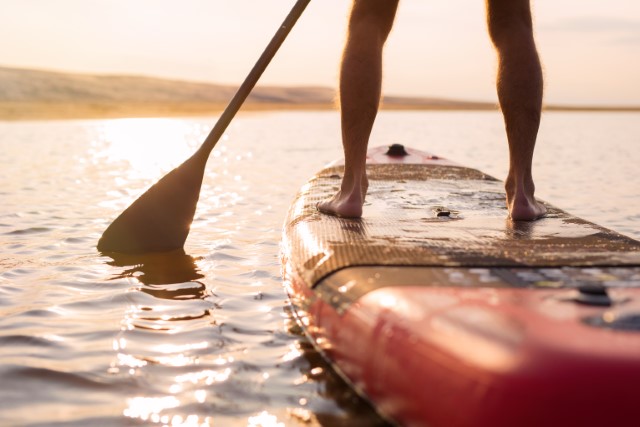
The water doesn’t stay still, after all. You use your shoulders and arms to move around.
There are three different paddling methods:
- Stand up, which is the most common form
- Kneeling, where you kneel on the paddleboard
- Prone paddling, where you lay on your belly
Paddle boarding is able to work a combination of muscles, including your core, legs, back, shoulders, and arms.
If you stand up on your paddleboard, you’ll work this full range of muscles.
If you kneel on your board, you won’t use your legs. If you’re in the prone position, you rely entirely on your triceps and biceps to do most of the work in tandem with your shoulders and back.
Legs
You must stand firm (which means that your feet are firmly planted) to maintain your balance while stand-up paddleboarding.
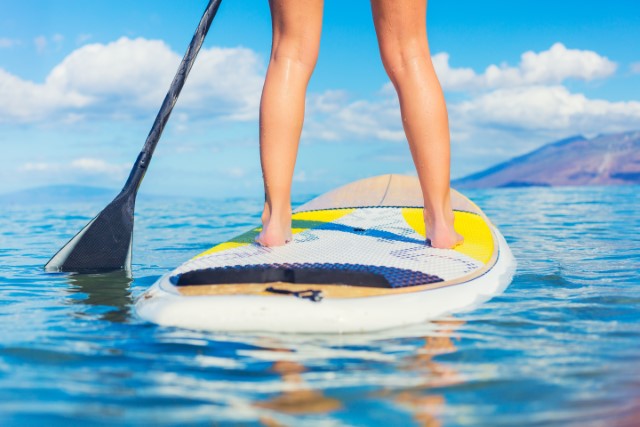
This is an amazing workout for your hamstrings. These are the muscles at the back of your thighs. It also works the quadriceps, which are the muscles at the front of your thighs.
You’ll be working these muscles to hold yourself in position as the paddle bobs on top of the water.
Heart and Diaphragm
Paddleboarding is also a good cardio workout that works your heart and diaphragm. That’s right, paddleboarding is good cardio exercise as well as strength training.
This provides you with a full workout. It’s a win-win for fitness lovers!
Abdominal Muscles
Abs (abdominal muscles) are the main muscles of your core.
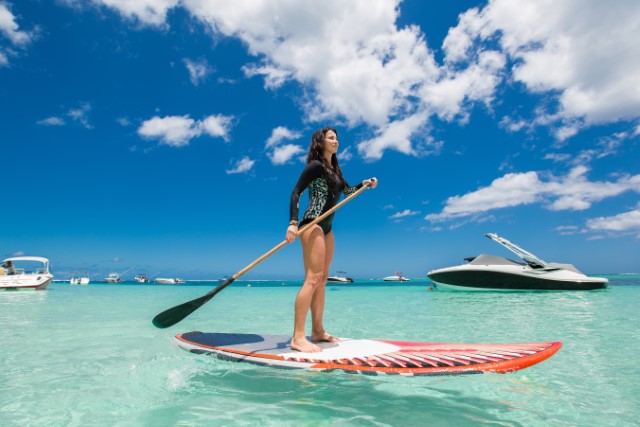
Exercising your abs will help support your leg muscles and let you have better balance. Your body will constantly shift when trying to balance and uses the abdominal muscles to pivot.
Back
Your back is instrumental in keeping your standing upright. You’ll be trying to align your legs, abdominal muscles, and back to maintain proper posture as you balance yourself on the board.
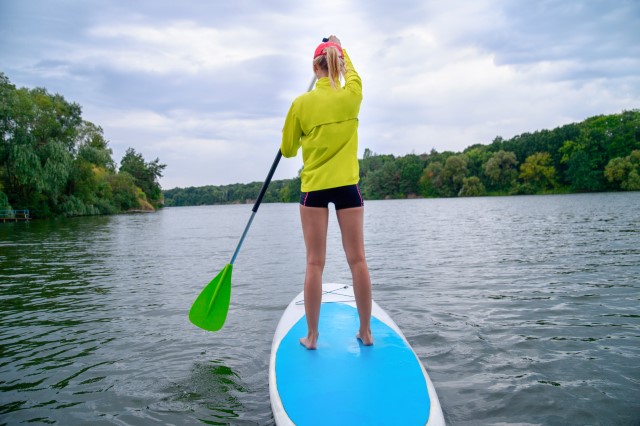
Your rhomboid muscles jump into action when balancing. These muscles are between the shoulder blades and near your sides.
While focusing on the back, you will also be working your lat muscles. These are the V-shaped muscles right beneath the rhomboid and trap muscles.
Shoulders and Arms
In conjunction with the back, your shoulder muscles work not just on balancing but helping you propel your paddle board forward.
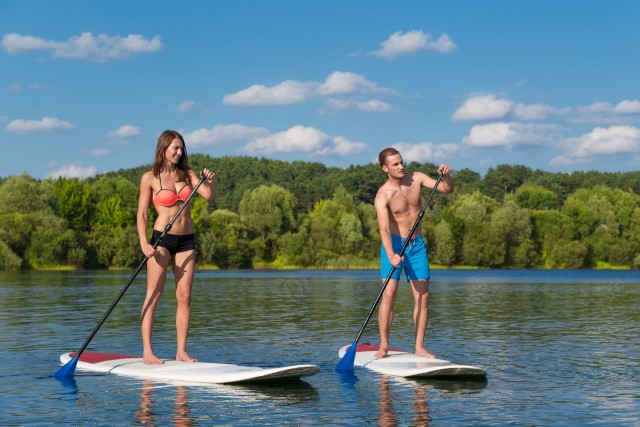
Your rotator cuffs, the muscles that connect your shoulders and arms, will be busy supporting the oar during paddling.
The oar is supported by the biceps and triceps as you grip and move it around, dipping it, pulling it, and lifting it as you go.
Paddle Boarding is a Full Body Workout, But There’s More!
It looks like a full-body workout, but paddle boarding is often low stress, low intensity, and low impact on your body. The exercise is easy on the joints and very accessible for beginners.
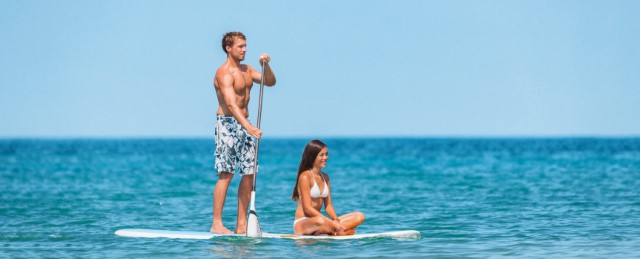
Even then, this does not mean you won’t get sore in the beginning. Yet, as all exercise goes, the more you delve into it, the easier it will get.
Paddle boarding will help you improve your balance. And good balance guarantees you use the right muscles.
Paddleboarding requires your body to move and balance yourself with the smallest of movements. This practice keeps your body to get accustomed to straightening up with the correct muscles.
Paddle boarding also improves your endurance. It’s a good cardio exercise that also improves your stamina.
This watersport increases lung volume, helps with red blood cells, and makes your heart pump faster. The added benefit of paddle boarding’s endurance training is that it will protect your knees, compared to running.
The Muscles Paddle Boarding Works (final thoughts)
Paddle boarding is a fun activity that most people can do.
The training is not too hard, and it can be done on pretty much any body of water (as long as the conditions are safe). It’s also environmentally friendly.
This sport has outstanding fitness benefits, and it’s low impact. That means it’s easy on your joints.
Yet it’s still a fantastic calorie burner! Given all that, it’s really no surprise that paddleboarding is one of the fastest-growing sports on the planet.


